goat barn set up
Having housing for animals is important for them, and having an organized space is important for us. This article on the best goat barn set up will help you get the best of both worlds.
How to Raise Dairy Goats starting with housing that they can thrive in year round no matter what the weather is like outside.
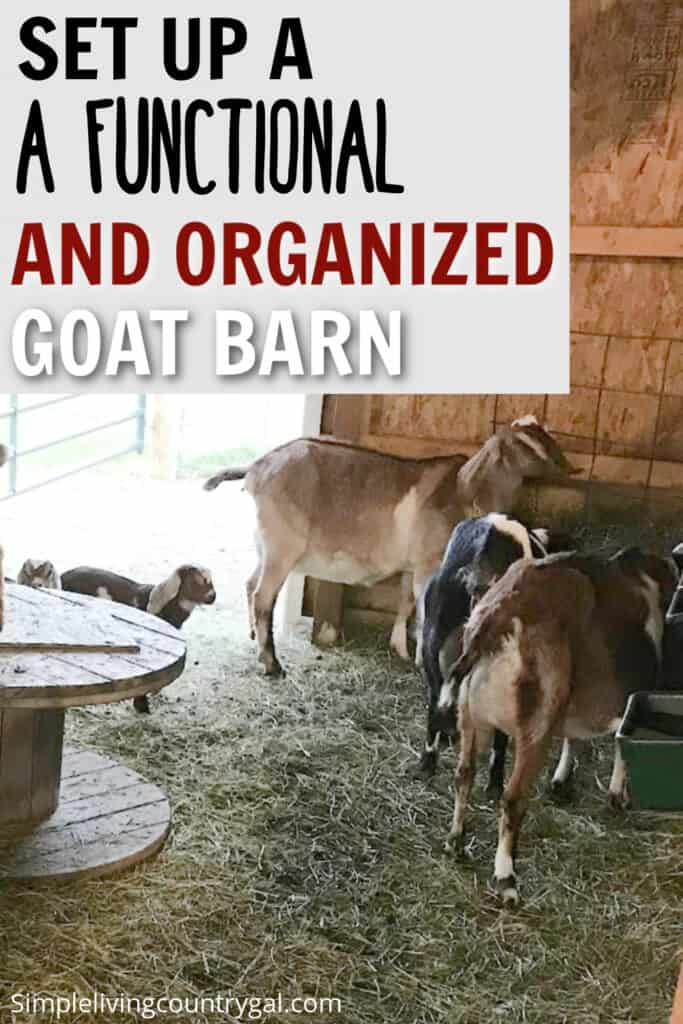
Working with goats can be an incredibly rewarding experience, and ensuring that they have the best home for their needs is essential. If you want to start a herd of your own or organize your goat barn into something more practical, then this article is for you. We will walk through what makes a good goat barn set up – from planning out the right sized areas based on a goat’s needs to storage solutions and more.
Whether this is your first venture into owning animals or just another project in a long line of farm work, by following these strategies, we’re sure you’ll end up with a functional barn space that meets both your needs and those of your herd.
Setting up a Goat Barn – Basic Requirements
When it comes to creating the perfect goat barn set up, there are a few key factors that you should consider. These include the size and layout of the barn, as well as the materials used for construction. It’s also important to keep in mind the specific needs and behaviors of goats when designing your barn.
General Pen Area
A general pen area is where your herd will spend their nights and days if the weather is bad. Goats need enough space to move around, play, and rest comfortably. For adult dairy goats, the minimum recommended pen size is 10 square feet per goat. However, if you have larger breeds or plan on expanding your herd in the future, it’s best to provide more space to avoid overcrowding.
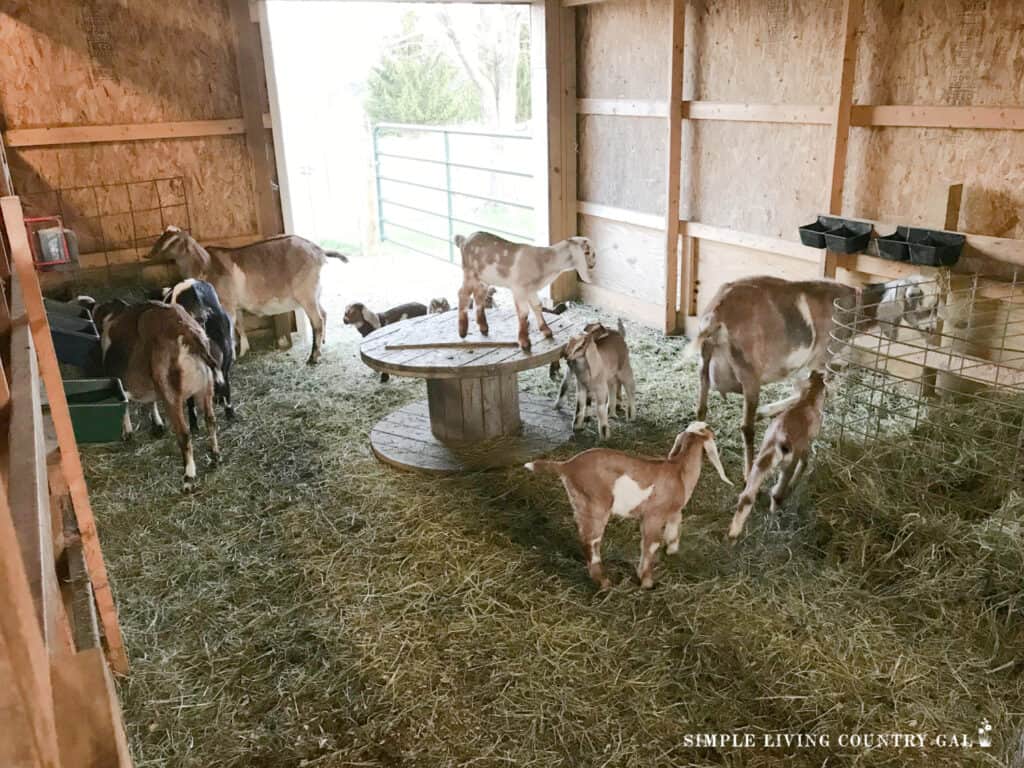
In addition to size, the layout of the general pen area is crucial. Goats are social animals and need to have enough room to interact with each other without feeling cramped. A rectangular or square-shaped pen can provide ample space for them to move around freely. It’s also important to have enough water and feed areas to serve your herd without fighting for access.
You can add mineral feeding areas as well as raised platforms for resting or playing on. We like to use electric spools throughout our set both inside and out. Many tomes you can get spools for cheap or even free by contacting your local electric company. Wood pallets are another option to consider.
Goat Barn Supplies
2 Pcs Hay Feeder for Goat Nylon Goat Feeder Slow Feed Hay Bag Goats Horse Hay Net with Metal Fastener and Adjustable Strap for Sheep Paddock (Black)


Individual Stalls
While a larger general pen area is essential, individual stalls are also helpful for a streamlined goat barn. These stalls provide a safe and comfortable space for goats to give birth, recover from illness or injury, and to separate any aggressive or sick animals from the rest of the herd.
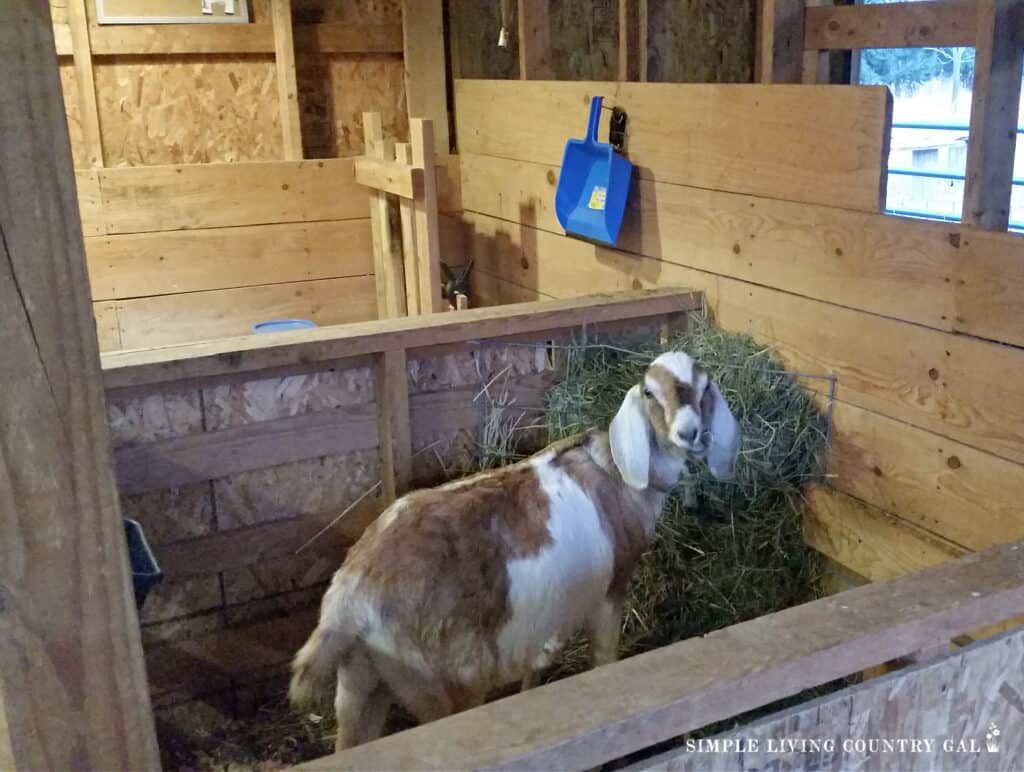
The recommended size for a single stall is 4 feet by 5 feet, but larger breeds may require more space. It’s also important to have a solid and sturdy divider between stalls to prevent any fighting or injury between goats. Finally, you will want to have room for a hay feeder, waterer, and minerals in each stall.
Kid Pens
If you plan on breeding your goats, it’s important to have separate kid pen for young and growing kids. This area can be inside of the general pen area, so the kids can be near the rest of the herd yet separate. The recommended size is 4 feet by 3 feet per kid. Kid pens also need a secure divider between them and the rest of the herd to prevent any harm from older goats. Kid pens are really important for a few reasons.
- It gives the kids a chance to socialize with each other.
- It provides a safe area for them to play and rest.
- It gives the adults in the herd a break.
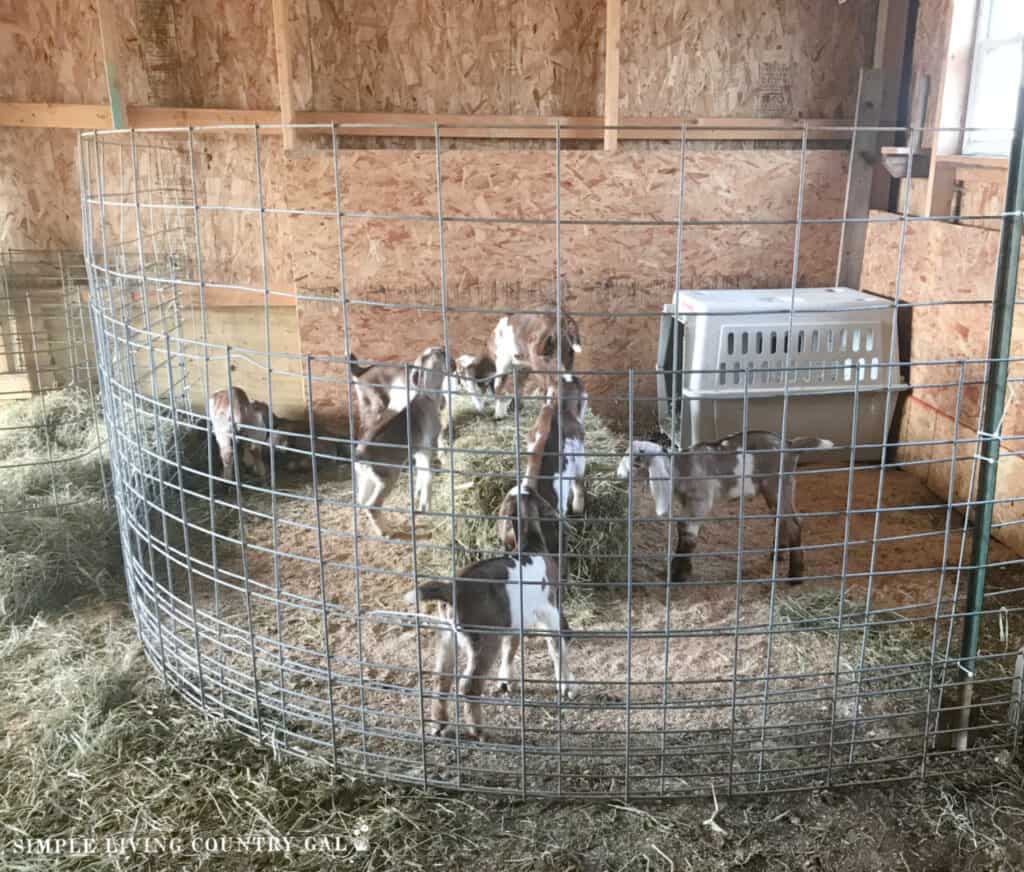
Buck Section
If you plan on owning a buck or breeding your does with an outside buck, having a separate section for them is an important part of your barn to consider. Bucks can be aggressive during rut, aka breeding season, so keeping them separated from the rest of the herd until it is time to breed is important for their safety and the safety of other goats. The recommended size for a buck pen is 10 feet by 10 feet, with a sturdy divider to prevent any fighting or escape attempts.
You can also set up a shelter outside for all of your male goats to stay in until breeding season arrives. Overall, bucks are a friendly and kind part of a herd, but during rut you will want to take precautions with both you and your entire herd.
More Goat Care Resources:
Other Components
In addition to the basic requirements for a goat barn, there are also essential components that can greatly improve the functionality and efficiency of your setup. These components not only benefit the goats but also make daily tasks easier for you as the owner.
Clear Aisles and Pathways for Easy Maneuverability
Having clear and wide aisles within the barn is essential for easy maneuverability and access to all areas of the barn. This is especially important during times of emergency or when moving larger items, such as bales of hay. It also makes it easier to clean and maintain the barn on a daily basis. The recommended width for aisles is at least 4 feet, but 6 feet is ideal for larger herds or when using equipment such as wheelbarrows or carts.
Feed Rooms with Proper Storage Space
Having a designated feed room within the barn is helpful for keeping the feed for all of your livestock fresh and free from contaminants. This space should be well-ventilated to prevent mold growth and have proper storage containers to keep feed dry and protected from pests. It’s also helpful to have separate storage areas for different types of feed, such as hay, grains, and supplements.
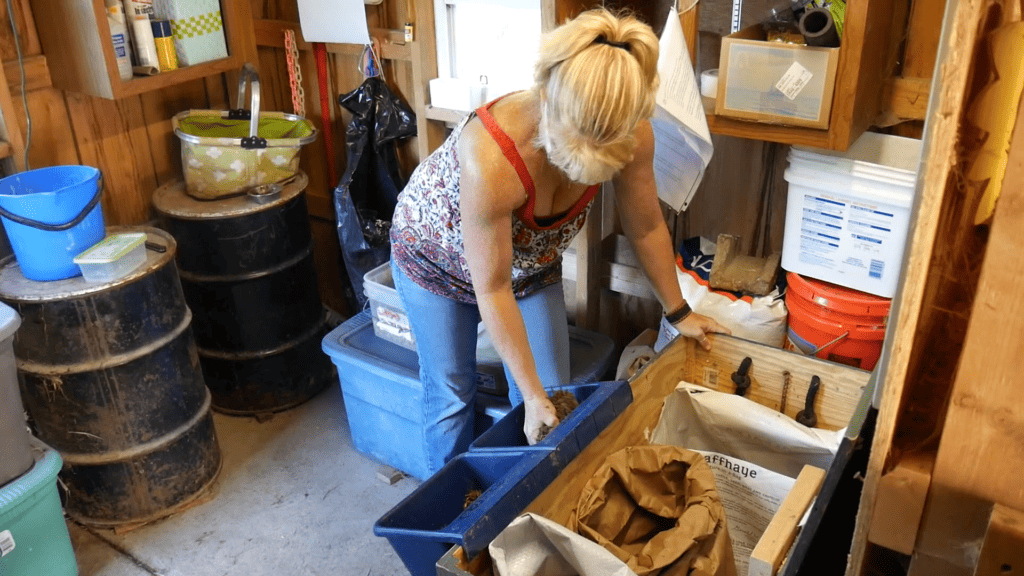
Hay Storage for Feeding
Hay is needed in areas where access to fresh pasture is limited due to weather. It’s recommended to have a separate area designated for hay storage, ideally on the upper level of the barn, to prevent moisture buildup. If you do not have room above, you can use an area in your barn for strong hay. Be sure to use pallets to elevate the hay off the ground, which can also help keep it dry and easily accessible.
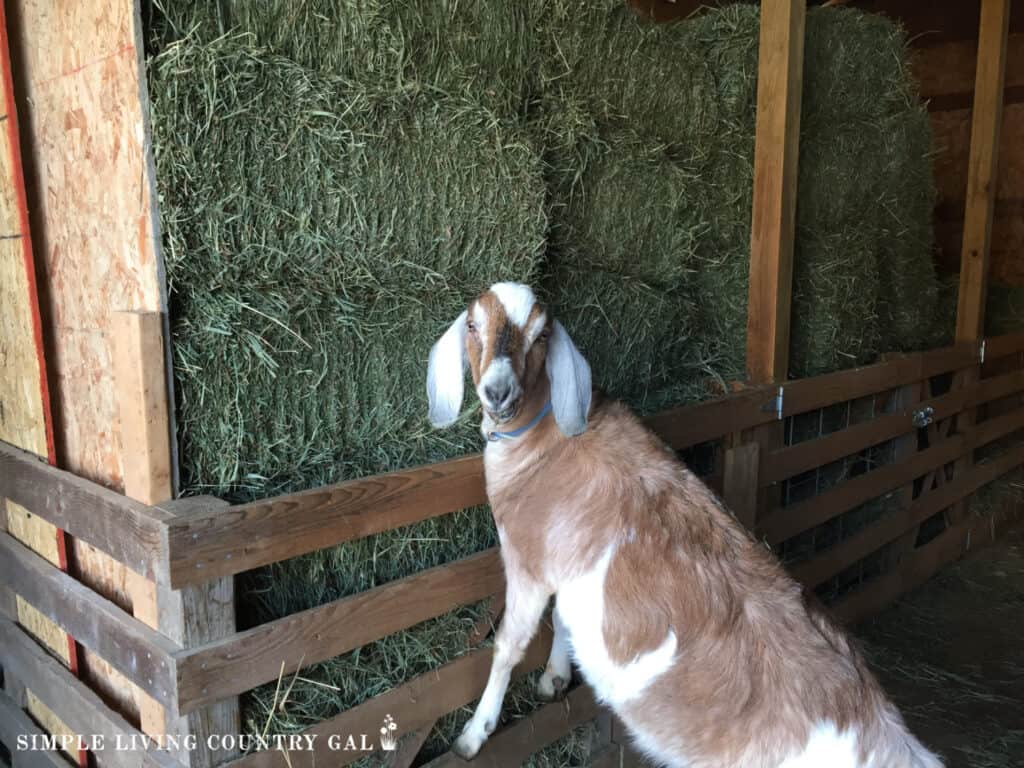
Milking area
If you raise dairy goats, having a separate area for milking is helpful in a goat barn. Yes, it’s true you can milk in an aisleway, but I have found that a sectioned off space can really help to keep the milk cleaner as well as stress-free milking. The size of a milk stall depends on what items you plan to keep inside. For us, we have a milk stand, a bench to sit on, room for milking supplies, and feed for the goat while she is on the stand. This means a stall that is 4×5 is adequate for us. Since we milk larger breeds such as Nubians and Alpines we do need a bit more room than the smaller breeds.
Dairy Goat Supplies:
Estink Manual Goat Milking Kit, 3L Plastic Portable Household Goat Milking Machine Manual Operation Sheep Cow Milker Kit Hand Pump Milker Machine for Farm Household Cow Goat Milking (for Sheep)




![WIDE Mouth Mason Jar Lids [16 Pack] for Ball, Kerr and More - White Plastic Storage Caps for Mason/Canning Jars - Leak-Proof](https://easyproductdisplays.com/wp-content/uploads/2017/07/buy6.gif)
Additional Considerations
When it comes to keeping your goats safe and comfortable, there are some additional considerations that you should keep in mind.
Accessibility of Clean Water & Food Sources
Goats require access to clean water at all times, so it’s helpful to have a reliable and easily accessible source of water within the barn if possible. If not, you can bring water out with you as we do in our setup. Similarly, ensure that your goats always have access to fresh hay by regularly checking and refilling hay containers.
Protection Against Predators, Weather, & Pests
In addition to proper shelter and storage, your barn should also be equipped with measures to protect your goats from potential predators, harsh weather conditions, and pesky pests. This can include installing secure fencing around the perimeter of the barn to keep out larger threats, using predator-proof materials for doors and windows for smaller threats, and implementing pest control methods such as traps or natural deterrents for microscopic threats such as worms or parasites.
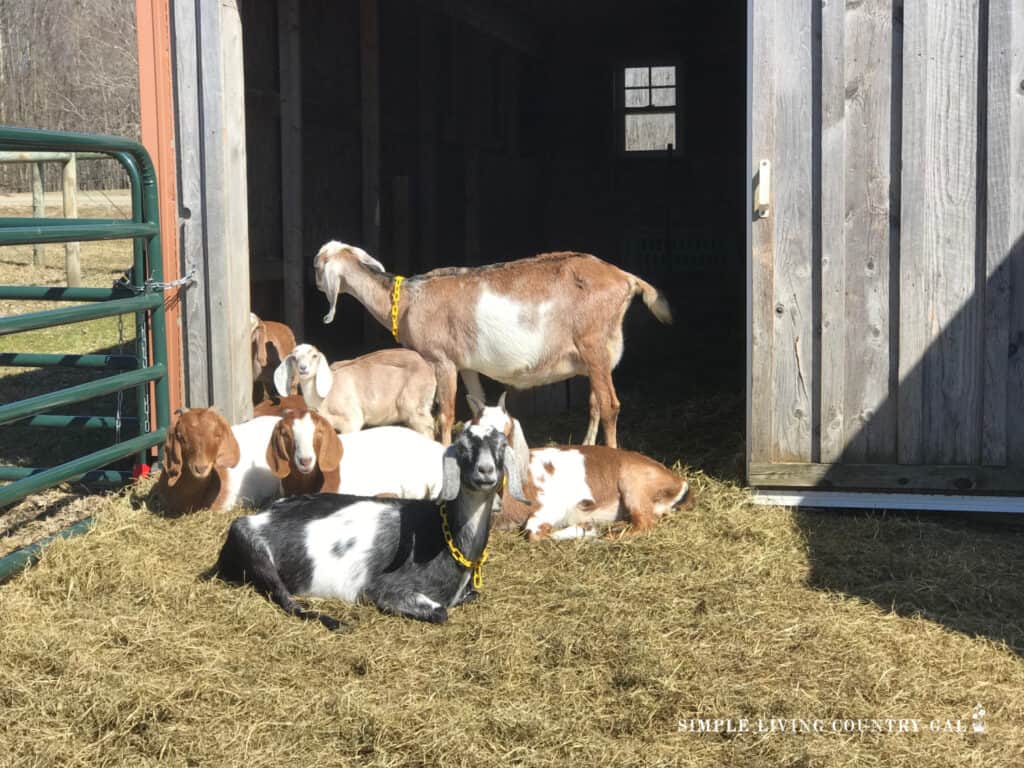
Proper Ventilation & Airflow
Proper ventilation and airflow are crucial for maintaining a healthy and comfortable environment for your goats. Good air circulation helps to prevent the buildup of moisture, which can lead to respiratory issues in goats. Make sure that your barn has windows or vents for fresh air to flow through, and consider adding fans if necessary.
Tips for Taking Care of the Barn Along With Your Goats
Taking care of a goat barn can really help to give your herd a space that is clean and healthy year-round.
Regular Maintenance
Make sure to regularly check and maintain the structural integrity of your barn. This includes ensuring that the roof, walls, and flooring are in good condition, as well as checking for any signs of wear or damage. Repair or replace any damaged areas promptly to prevent further issues.
Keep things clean
Goats are clean animals, but their barn can quickly become dirty and dusty if not routinely maintained. Creating a routine of cleaning and disinfecting the barn, removing waste and soiled bedding, and providing fresh bedding for your goats can make this part of raising goats easier.
Good Feeding Habits
The barn is not just a shelter for your goats; it’s also where they will eat and drink. Ensure that the feed and water areas are clean, dry, and easily accessible to your goats. It’s also essential to monitor their feeding habits and make any necessary adjustments to ensure they are getting proper nutrition.
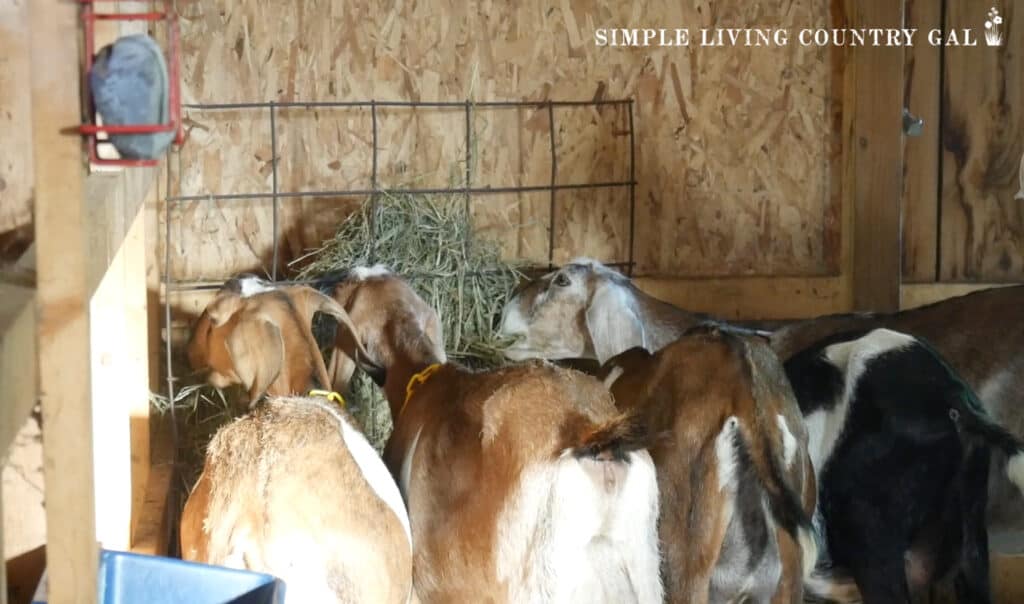
Regularly Inspecting for Pests & Predators
Pests and predators pose a significant threat to the health and safety of your goats. Regularly inspecting your barn for signs of infestation and implementing preventive measures such as sealing any openings or using natural pest repellents can help keep them at bay.
Setting up a goat barn requires careful planning and regular maintenance to ensure the health and well-being of your goats. Following best practices for cleanliness, hygiene, nutrition, and pest control, you can create a safe and comfortable space for your goats to thrive. Regularly inspect and maintain the barn’s structural integrity to prevent potential hazards or damage.
With proper care and attention, your goat barn set up can be a clean and healthy environment for your goats to call home.










![WIDE Mouth Mason Jar Lids [16 Pack] for Ball, Kerr and More - White Plastic Storage Caps for Mason/Canning Jars - Leak-Proof](https://m.media-amazon.com/images/I/315hC2lw8+L._SL500_.jpg)
